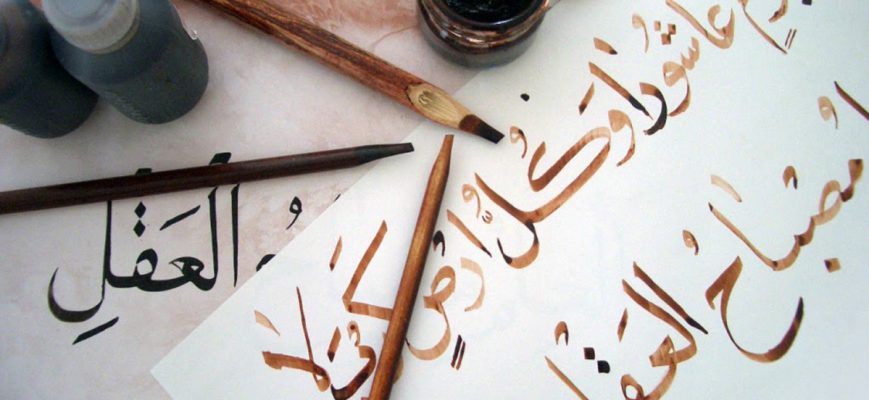Expert typesetting and DTP in Arabic
Did you know we offer translation and typesetting in multiple scripts? Including Chinese, Japanese, Korean, Hindi, and of course, Arabic. There are about 313 million Arabic speakers worldwide, making it the fifth most-spoken language behind Mandarin, Spanish, English and Hindi. The population in North Africa, the Arabian Peninsula and the Middle East — known collectively as the Arab world — numbers 475 million. So this market should not be overlooked when localising your products, services, and communications.
We offer complete Arabic language services: from translation, review and editing, through to typesetting and DTP, and delivery in your chosen format. Our expert Arabic translators can advise on linguistic issues regarding cultural references, register and style. Additionally, a dedicated Project Manager will oversee the entire process, as well as managing the timeline to ensure your project is delivered on-time, and within budget.
Find out more: Transcreation: the next level of Localisation
Related topic: Arabic Localisation Challenges: Dialects
Typesetting
Typesetting is the way that text is composed using the symbols, letters, and glyphs in digital systems. It’s a crucial part of design that requires an understanding of fonts, corresponding font sizes, and line spacing. Good typesetting creates legible and visually pleasing type and compelling page layouts, resulting in an optimal reading experience. Our typesetting in Arabic will retain the original look and feel of your document, while making the necessary adjustments to accommodate a right-to-left script format.
Key points
- Arabic is written from right to left, and has no cases.
- Letters take multiple forms depending on the context.
- Diacritical marks above and below letters indicate vowel sounds, but these are not always required.
- Other languages using the same script include Dari, Farsi, Pashto, Kurdish, Punjabi, Uyghur, Urdu, and Malay.
Consider that a right-to-left script requires each double page spread to be ‘flipped’ so the content also progresses right-to-left. This ensures that each page item or section is presented in the same order as the original layout. In some cases, clients may choose to re-paginate the document entirely, to have the book or brochure reading in the opposite direction. Alternatively, we also offer a bilingual/multilingual document format (multilingual PDFs) — in which the user can change language with a click of a button. In this case, each spread is ‘redirected’ while the document as a whole retains the original flow. Please request a free consultation to discuss multilingual options for your project.
Note: We usually work in InDesign, and would always recommend using InDesign for this type of work.
Use of Computer Assisted Translation (CAT) tools
By using an .idml file (which is easily exported from InDesign, in the same way as you export a PDF) our CAT tools will maintain the formatting of the document. This includes paragraph and character styles, as well as links and other interactive elements such as cross references and buttons. Once translated, our designer will replace the original font with an appropriate Arabic match while retaining the styles and emphasis of the original.
Selecting a typeface
Arabic typesetting requires a font which supports the Arabic script — ie. if your brand typeface does not support Arabic, you will not be able to use it. Arabic typefaces are different to Latin-based, in that they are cursive (italic) and joined-up. The shapes of characters can also change depending on the word, and surrounding words. However, as with Latin type, there are a variety of fonts available to give your design your preferred style. Our designers can select a font from our collection or, if you have a specific typeface in mind, we are happy to work with your supplied preference.
Related topic: Why It’s So Hard to Design Arabic Typefaces | Wired Magazine
Tips when designing materials for translation into Arabic
- Note that Arabic takes up less space than English text — it requires fewer characters for the same content.
- Avoid using capitals for headlines or emphasis, as Arabic is not case-sensitive — Arabic doesn’t use capitals.
- Do not use italics for emphasis, as the Arabic script is cursive.
- Avoid using non-editable text in images or graphics. Non-editable text will have to be re-typed; this will slow down the workflow. Additionally, we will need the original ai/psd files in order to replace the translated text.
- Avoid “word clouds” or typography which uses mixed type sizes. Although this can be visually interesting in English, it does not have the same impact in Arabic and can result in confusing, or even incomprehensible, text.
- Consider that proper nouns (such as your company name or product names) are not usually translated. In English, they may appear at the beginning of the sentence, however due to differences in grammatical structure (word order) they could end up being in the middle of the sentence when translated.
- The Arabic script is joined-up so avoid in-word letter spacing (kerning and tracking) — it will look unnatural and displeasing in translation.
- For efficiciency, avoid using tabs — create tables instead. Tables adapt easily to alternative layouts while using tabs will slow down the workflow.
- It’s a good idea to finalise the design before translation — substantive, mid-project design changes could incur further costs.
Our Arabic translation and typesetting services
- Professional* translation into Arabic
- Arabic proofreading and review
- Arabic typesetting and DTP
- QA: Quality Assurance check
- Localisation of graphics in the document
- Dedicated project manager
- Delivery of press- or screen-ready PDFs, or original files with outlined text — as requested.
*All our translators are native speakers of the target language; and hold university degrees in relevant languages, linguistics and/or translation.

